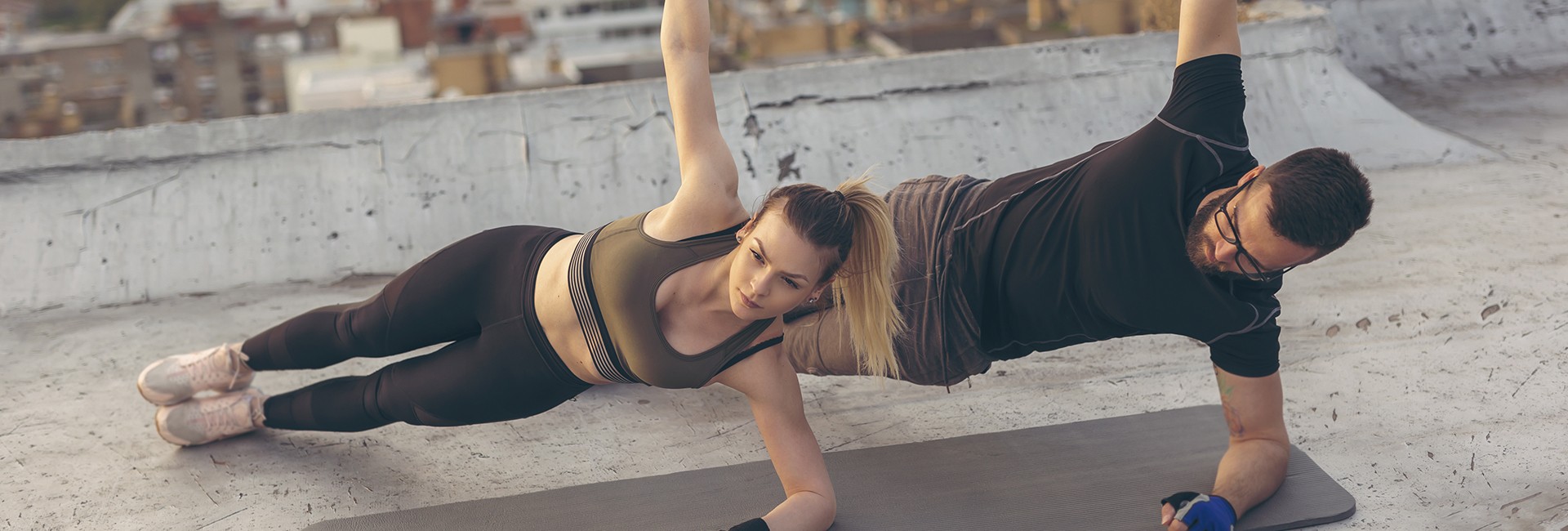Cardio and strength training: Should you combine the two or is it best to do them as separate sessions on different days of the week?
The answer to this question is simple:
Depends on your fitness goals.
Cardio and Strength Training Separately
You might have seen the bodybuilding-types, hefty lean ~110kg units walking slowly (but at a consistent pace) on a treadmill on their off-weights day.
Why? These guys are looking to perform steady-state cardio that doesn’t fatigue their muscles or nervous system, allowing them to jump back into their scheduled weight training the next day.
Also, some research suggests that low-moderate intensity workouts can help pump blood flow to damaged muscle tissue allowing you to bounce back faster.
When to opt for cardio?
The best way to judge if it’s time for some slow consistent cardio work is when you’re feeling the infamous DOMS (delayed onset muscle soreness). Also, your fitness watch can help you to program your workouts and ensure you fully recover between hard cardio or strength sessions.
A fitness watch can be like having a coach attached to your wrist at all times!
For example, Polar’s FitSpark™ daily training guide suggests the most appropriate workout for you based on your workout history and daily activity, fitness level and recovery status.
Learn to listen to the signal your body is giving you and check what your fitness watch is recommending. Then, adjust the intensity of your workouts accordingly.
There’s no point jumping into a HIIT workout session post-weights, or even the day after lifting, if your muscles are feeling sore and overly fatigued. Instead, why not hop on your treadmill and maintain a pace that doesn’t get your heart rate into the orange-red zone (85-100% max intensity)?
Your goals are paramount in determining the best time to perform cardio or strength, and the time lapse between them is important.
If your goal is to build strength…
If your goal is to build strength and you’re performing cardio within a 6-hour window of lifting weights, research suggests you are confusing your body with multiple activation patterns, diminishing strength gains.
On the other hand, endurance cardio and other forms of intensity workouts can be enhanced by power and strength workouts.
This scenario has been coined the ‘interference phenomenon’ and involves adaptation mechanisms within the body competing and impeding the success of the other. Interestingly, the interference phenomenon typically works in one direction, meaning that if your goal is to build strength and you’re performing cardio (particularly endurance cardio), you’re compromising your strength gains.
In short, if you’re looking to build muscle and strength, it’s best to avoid concurrent training (cardio and strength training combined).
Cardio and Strength Training Combined
As we turn to the benefits associated with combining cardio and strength training, it’s important to repeat once again that your individual goals determine which approach is right for you.
- Endurance athletes can benefit from concurrent training as it can offset the catabolic nature of long-distance workouts. It’s a well-researched fact that high volume endurance workouts can reduce testosterone (helpful for energy, muscle mass, fat distribution and libido) and increase cortisol (stress-hormone), and so incorporating strength training can help reduce these effects.
- The same can be said for short-distance/power athletes. However, appropriate recovery the day after intense cardio and strength becomes paramount.
- Regular exercisers can also combine cardio and strength training, especially if you’re struggling to make time for exercising and can’t schedule in several workouts per week.
The ‘high-low method’: Grouping high and low intensity stimuli
As a middle distance runner and triathlete, I’ve been programmed my whole life to perform strength training on the same day as a hard run session. This was to allow for longer recovery between hard training days, ensuring my muscles and nervous system fully recovered.
This type of ‘high-low method’, popularized by well-renowned sprint coach Charlie Francis, explains the benefits of grouping high intensity stimuli and low intensity stimuli on the same days.
- In other words, high intensity days- like sprinting and Olympic lifting should be performed on the same day.
- Similarly, low intensity stimuli activities, like tempo runs or skill sessions (practising lifting technique at low weight), should be performed together.
It’s critical to note that Charlie Francis believed high intensity stimuli activity should be followed by 48-72 hours of full recovery (no other high intensity exercise).
In layman’s language:
If you have completed a hard cardio workout and some heavy/explosive weights in the same day, it’s best to ensure you leave enough time for recovery before your next big workout day.
Complement your workouts with low-intensity activity and pay attention to your nutrition to ensure your muscles and nervous system are replenished. This will help to mitigate injury and severe energy depletion.
So, should you combine cardio and strength training?
The answer is subjective and goal-dependent:
- If you’re looking to build strength and put on muscle mass, research suggests you are best to keep your weights separate from your cardio work.
- If you’re looking to improve your endurance and power output (e.g. sprint times), it’s recommended that you do long-distance and high-intensity cardio on the same day as resistance training. Make sure you complete low intensity to moderate exercise on the following days.
Sounds complicated? If you’re using a fitness watch that offers data-based workouts suggestions, use that guidance – data is a valuable tool for improving your fitness injury-free.
If you don’t have data available – reconnect with your body and mind and truly seek to understand what you need, instead of just pushing harder when it’s the last thing you should be doing.
If you liked this post, don’t forget to share so that others can find it, too.
Or give it a thumbs up!
I like this article
Please note that the information provided in the Polar Blog articles cannot replace individual advice from health professionals. Please consult your physician before starting a new fitness program.





